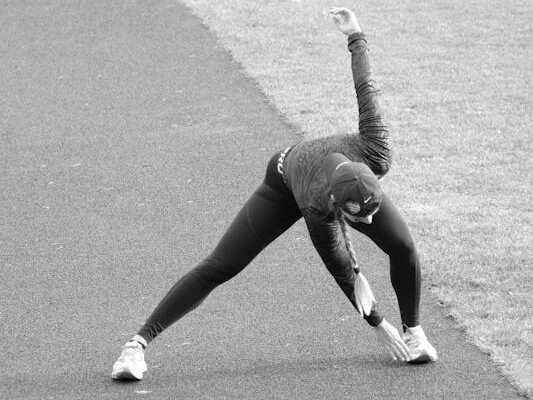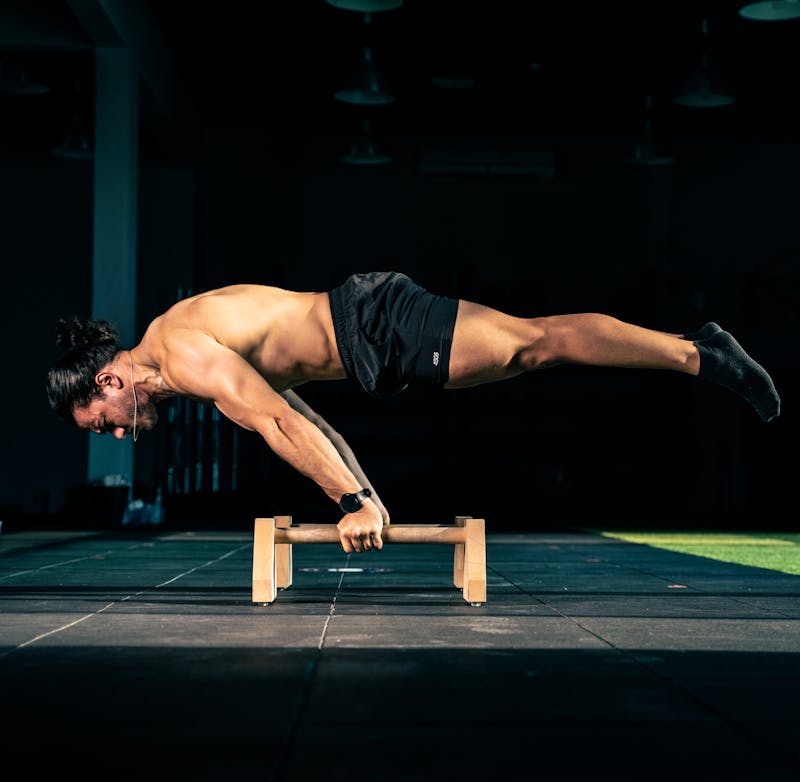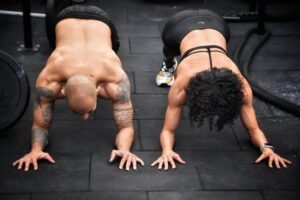Last Updated on August 29, 2025 by shawnshealth
Learn to avoid common calisthenics mistakes and fast-track your progress for faster, better results!
Introduction to Common Calisthenics Mistakes
Common calisthenics mistakes: If you’re diving into the world of calisthenics, congratulations! It’s a fantastic way to build functional strength, improve mobility, and transform your body. But like any new fitness discipline, calisthenics can be challenging, especially when you don’t know the common mistakes that could be holding you back. Whether you’re just starting, or you’ve been training for a while, avoiding these errors can fast-track your progress and keep you from plateauing.
In this post, we’ll go over 5 common calisthenics mistakes that you need to avoid, so you can unlock your full potential and see results faster.
💪 New to bodyweight training? Start with our Calisthenics for Beginners guide for simple, effective moves you can do at home—no equipment needed. It’s the perfect launchpad for building strength safely and confidently.
Take a look at this video from Daniel at FitnessFAQ: The Harsh Truth About Calisthenics (a mindset switch).
What are Calisthenics?
- Bodyweight exercises for strength, flexibility, and endurance
- No equipment needed
- Common moves: push-ups, pull-ups, squats, lunges
- Targets multiple muscle groups
- Effective for all fitness levels
What Are Common Calisthenics Mistakes to Avoid?
- Not mastering the basics before progressing to advanced moves
- Rushing through exercises without focusing on proper form
- Overtraining without adequate rest or recovery
How Can I Improve My Calisthenics Performance?
- Focus on mastering fundamental bodyweight exercises
- Prioritize quality over quantity for better muscle engagement
- Include mobility and flexibility work in your routine
Why Am I Not Seeing Results in My Calisthenics Routine?
- Lack of consistency in training and recovery
- Ignoring the importance of progressive overload
- Failing to balance strength, endurance, and mobility work
Table of Contents
As an Amazon Associate, I earn from qualifying purchases. This means I may receive a commission if you purchase through links on this site, at no extra cost to you.
Always consult your doctor before starting any new exercise program. The author is not responsible for injuries or health issues arising from the use of this information.
Author’s Note:
I wrote this after realizing most of my early “workouts” were just impressive ways to waste energy. Ever done dramatic kipping pull-ups and wondered why you’re not getting stronger? Yeah… same. This guide covers the most common calisthenics slip-ups I either made myself or watched others make while pretending I knew better. Hopefully, it helps you dodge a few of those traps and fast-track your progress—without the extra drama (or ice packs).
The 5 Common Calisthenics Mistakes
Mistake #1: Neglecting Warm-Ups and Mobility Work
One of the biggest mistakes beginners make is jumping straight into their workout without warming up properly. This can lead to injury and hinder your performance. A proper warm-up prepares your body for the physical demands of calisthenics, improving your range of motion and preventing muscle strains.
Tip: Incorporate dynamic stretches and mobility exercises like shoulder dislocates, hip rotations, and leg swings before your workout. This will enhance your flexibility, protect your joints, and set you up for success.

Mistake #2: Poor Form and Technique
In calisthenics, form is everything. Whether you’re doing push-ups, pull-ups, or squats, using improper form can lead to injuries and wasted effort. It’s crucial to focus on the technique rather than just getting through the set.
Tip: Slow down your movements and focus on maintaining perfect form. Keep your core engaged, avoid letting your lower back sag during push-ups, and ensure your elbows stay in line with your body during pull-ups.
Mistake #3: Overtraining and Insufficient Rest
It’s easy to get carried away with the excitement of calisthenics and push yourself too hard. However, overtraining can lead to burnout, fatigue, and even injury. Your muscles need time to recover and grow.
Tip: Incorporate rest days into your training schedule. Allow your muscles at least 48 hours to recover before working the same muscle group again. Quality rest is as important as the training itself.
Mistake #4: Not Progressing Properly
Many beginners stick to the same exercises and intensity for far too long, not realizing that calisthenics is about progression. To continue seeing improvement, you need to increase the difficulty of your exercises gradually.
Tip: Once you’ve mastered a basic exercise, like a regular push-up, move on to more challenging variations, like diamond push-ups or decline push-ups. Adding reps, sets, or intensity will help you make steady progress.
Mistake #5: Ignoring Nutrition and Hydration
Your performance and recovery are heavily influenced by what you put into your body. Poor nutrition and dehydration can prevent you from reaching your full potential.
Tip: Eat a balanced diet with adequate protein, healthy fats, and complex carbohydrates. Drink plenty of water before, during, and after your workouts to stay hydrated.

✅ Quick Checklist: Avoid These 5 Calisthenics Mistakes
- ☐ Warm up with dynamic mobility before every session
- ☐ Focus on form over reps—quality beats quantity
- ☐ Schedule rest days to recover and grow stronger
- ☐ Progress gradually with harder variations or added reps
- ☐ Stay hydrated and fuel your body with balanced nutrition
Conclusion
Calisthenics is a powerful and efficient way to build strength, flexibility, and overall fitness. By avoiding these 5 common calisthenics mistakes, you’ll be on your way to achieving faster progress and better results. Remember to warm up, focus on form, rest properly, progress gradually, and fuel your body with the right nutrition.
Start implementing these tips today and watch as your body becomes stronger and more functional.
Want to learn more about bodyweight training? Check out The Ultimate Calisthenics FAQ: Everything You Need to Know About Bodyweight Training for a complete guide to calisthenics, including exercises, tips, and expert advice to help you get stronger and move better.
📚 Want expert insight into bodyweight training? Read Harvard Health’s overview of Calisthenics for a science-backed look at why simple movements can deliver powerful results—especially for older adults.
🕹️ Prefer a more playful, step-by-step approach? Check out Nerd Fitness’s Beginner Calisthenics guide for fun, practical tips that make bodyweight training feel doable and motivating—even if you’re starting from scratch.
💪Tools for Making Great Progress!
Calisthenics fitness equipment is designed to enhance bodyweight training, making it easier to perform exercises with proper form and increasing your workout options. Whether you’re using pull-up bars, resistance bands, or parallettes, this equipment allows you to build strength, flexibility, and endurance without needing a full gym setup. Ideal for both beginners and advanced athletes, calisthenics equipment offers versatility and convenience for training at home or on the go.
Check out a variety of calisthenics equipment on Amazon to elevate your fitness routine.
FAQ’s for Calisthenics
1. What are calisthenics?
- Bodyweight exercises that improve strength, flexibility, and endurance
- No equipment required
2. What are some common calisthenics exercises?
- Push-ups
- Pull-ups
- Squats
- Lunges
3. Do I need equipment for calisthenics?
- No, calisthenics can be done without equipment
4. Who can do calisthenics?
- Suitable for all fitness levels
- Can be modified for beginners or advanced athletes
5. How do calisthenics improve strength?
- Builds muscle using bodyweight resistance
- Targets multiple muscle groups simultaneously
6. Can calisthenics help with flexibility?
- Yes, many movements stretch and strengthen muscles
- Promotes joint mobility
7. How often should I do calisthenics?
- 3-5 times per week is recommended
- Include rest days for recovery
8. Are calisthenics effective for weight loss?
- Yes, calisthenics can burn calories and build muscle
- High-intensity moves boost metabolism
Do not be afraid, little flock, for your Father has been pleased to give you the kingdom. – Luke 12:32




